- Home
- slideshows
- miscellaneous
- We visited a Tesla showroom and a Mercedes-Benz dealership - here are the biggest differences between the two
We visited a Tesla showroom and a Mercedes-Benz dealership - here are the biggest differences between the two
I started at Tesla's store in Manhattan's Meatpacking District.

The first thing I noticed was the store's minimalist design philosophy. Like Tesla's cars, the store seemed to emphasize the removal of non-essential visual information.
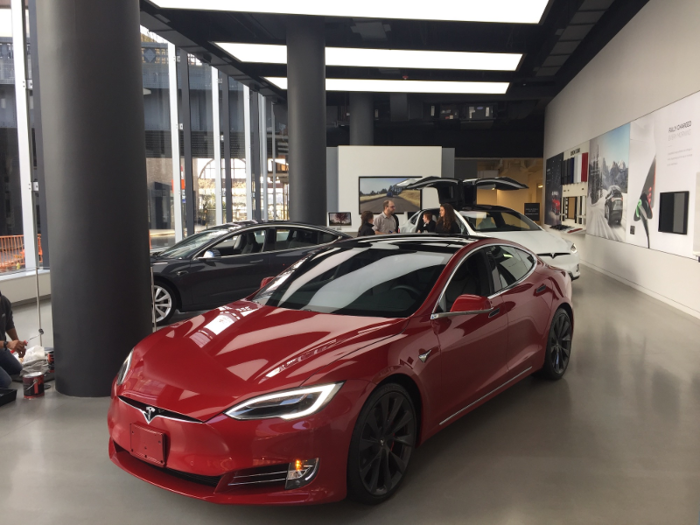
Because Tesla sells its vehicles directly to customers instead of using independent dealerships, the company has more control over its stores and the way they present the brand to consumers than other automakers do.
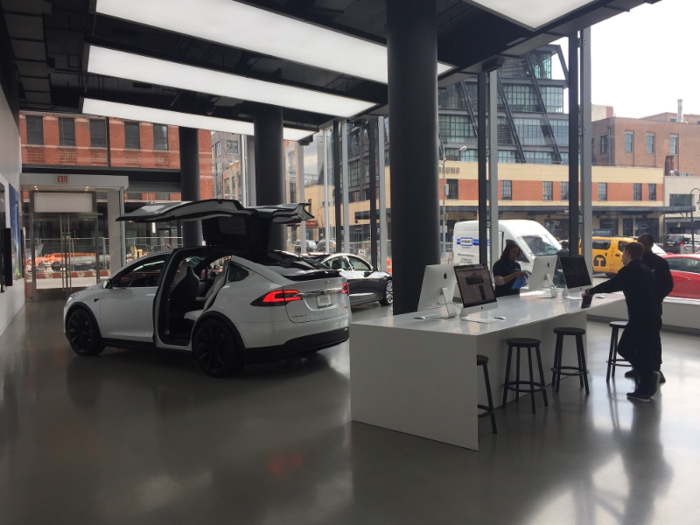
The aesthetic alignment between the store and its products reminded me of an Apple store and highlighted the fact that the store is selling Tesla as a brand as much as its cars and energy products.
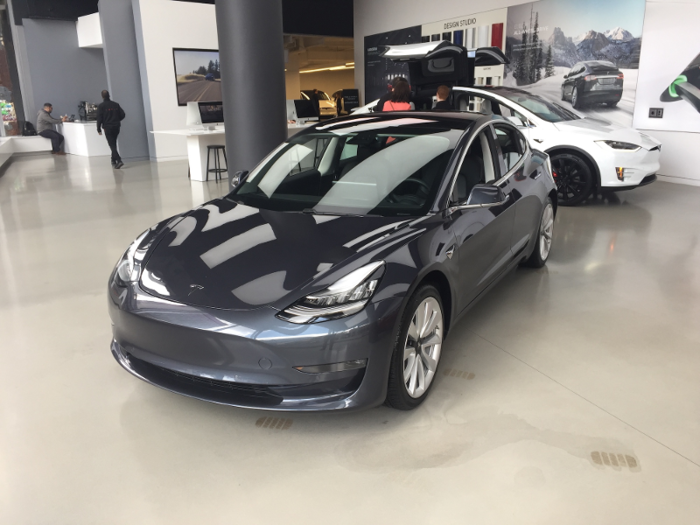
When I first walked in, I was approached by a friendly and outgoing Tesla employee. Her enthusiasm didn't wane when she learned that I wasn't in the market for a car.
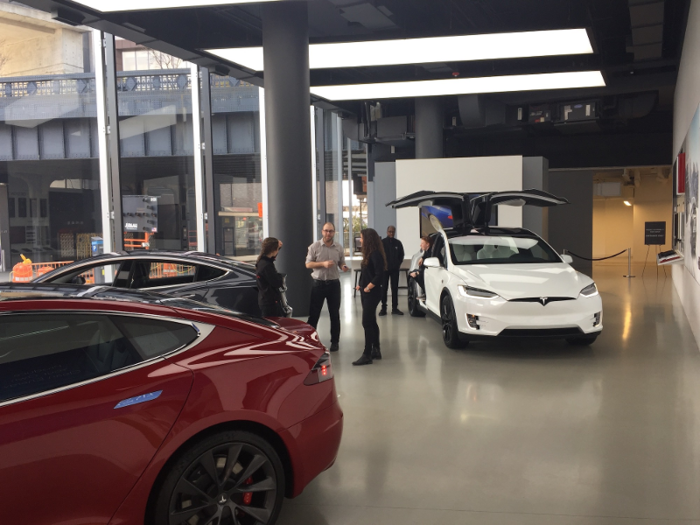
She explained Tesla's business model, vehicles, and energy business clearly and concisely.
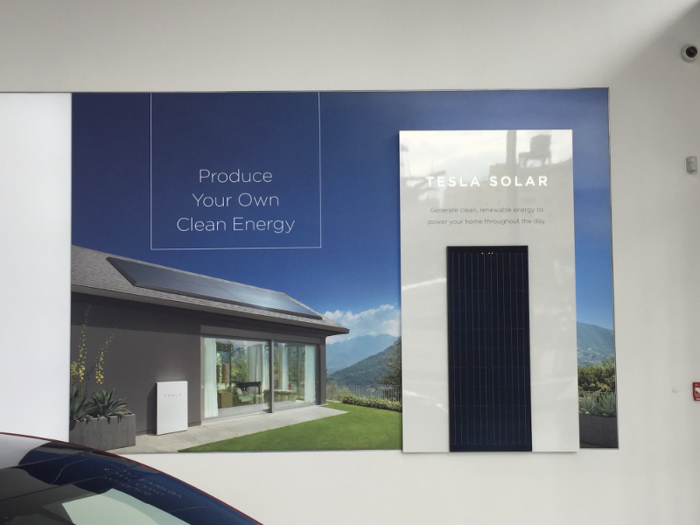
She and her colleagues reminded me of a hybrid between Apple employees and traditional car salespeople, combining the former's approachability with the latter's extraversion and persistence.
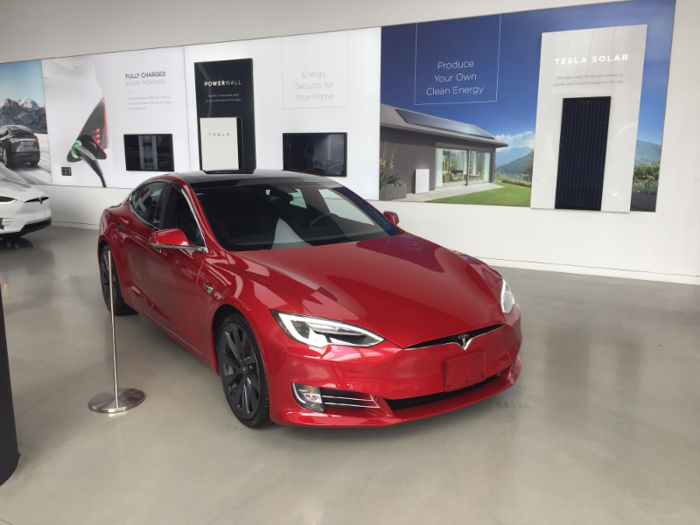
The first employee I spoke with was eager to strike a conversation about Tesla at a moment's notice in a style that blended tech evangelism and product-oriented selling.
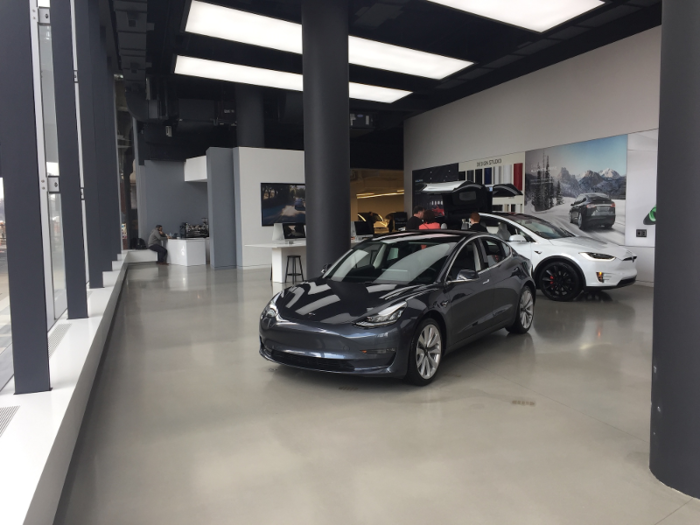
While the Tesla store doesn't have any cars on the lot for those who want to drive home with one, there are cars available for a test drive.
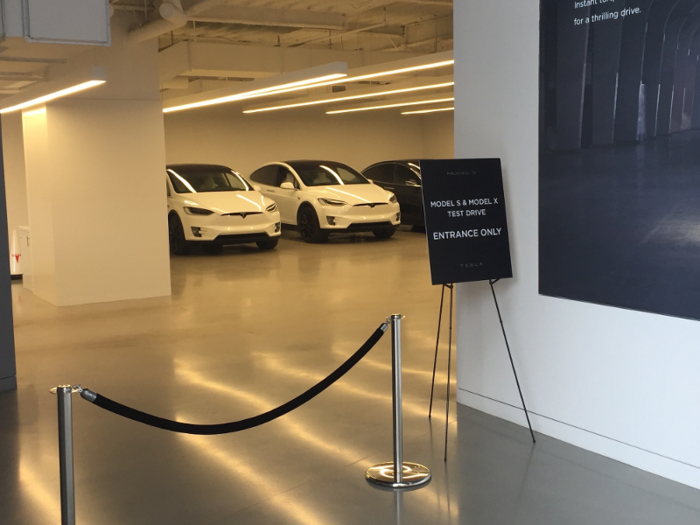
You can evaluate your options through the store's digital "design studio."
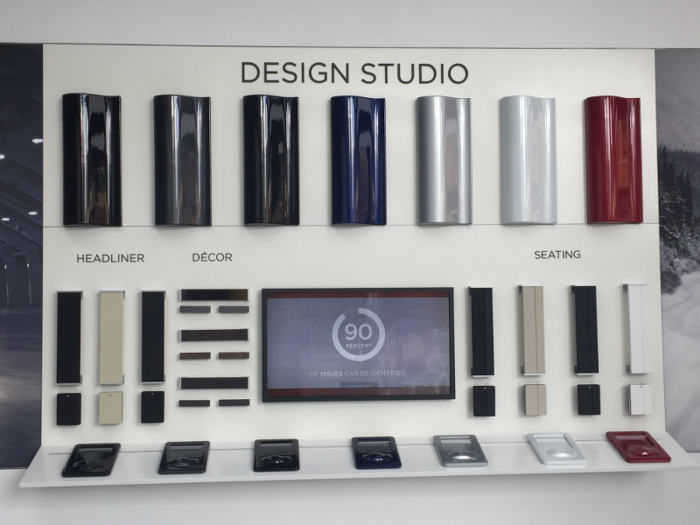
And if you'd like to buy a Tesla vehicle, an employee can guide you through the process at one of the store's computers.
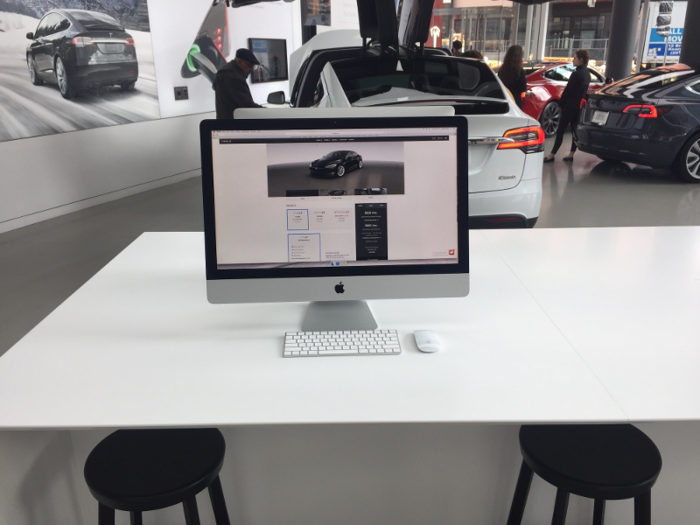
Overall, the store reinforced Tesla's aesthetic identity and showed how the convergence of the auto and tech industries might influence the way cars are sold.
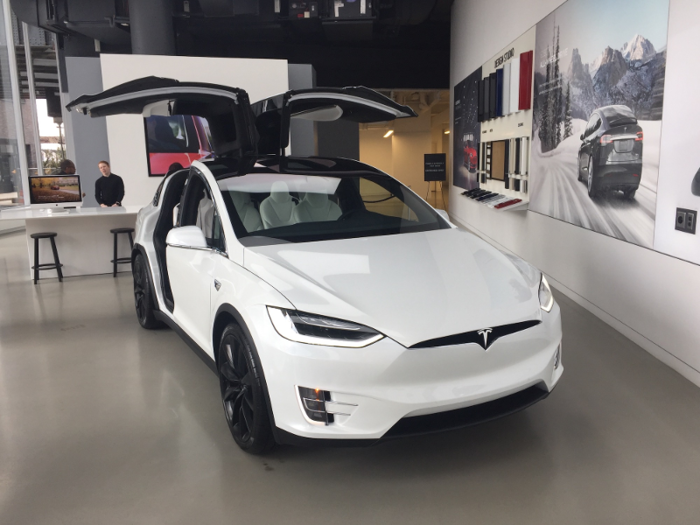
Even the barista's station is clean and stylish.
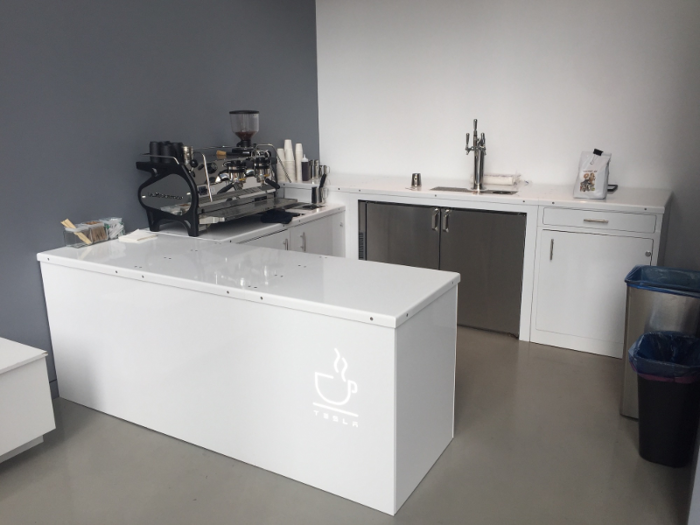
I went to the Mercedes-Benz dealership in Hell's Kitchen next.
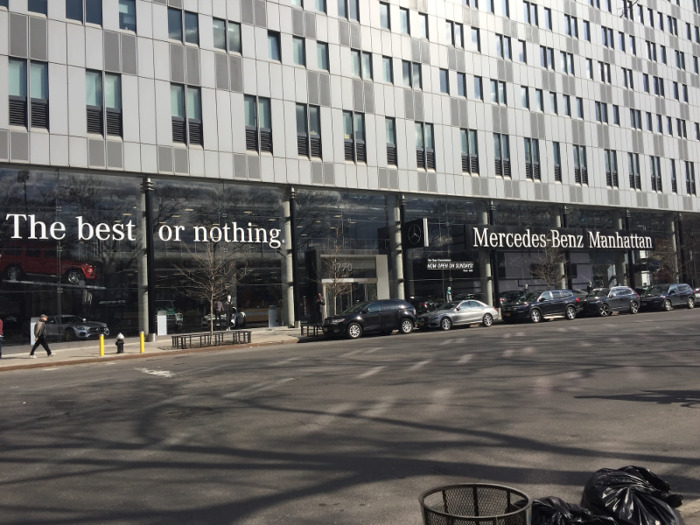
Immediately, it resembles a more traditional dealership.
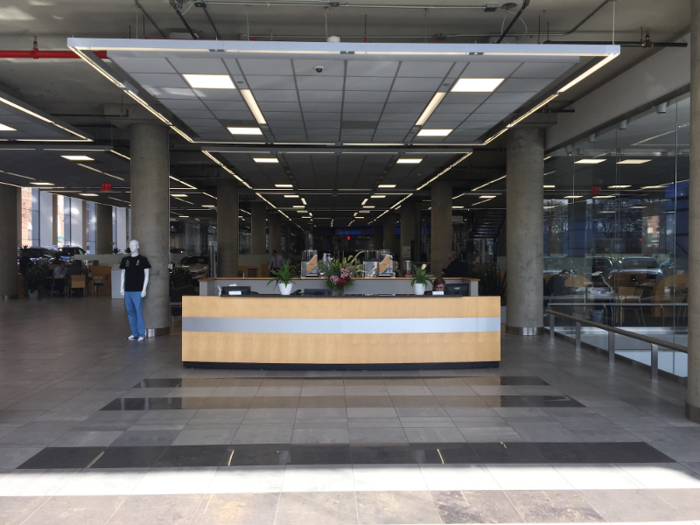
There are more cars on display (which, of course, is a function of the fact that Mercedes-Benz sells far more models than Tesla).
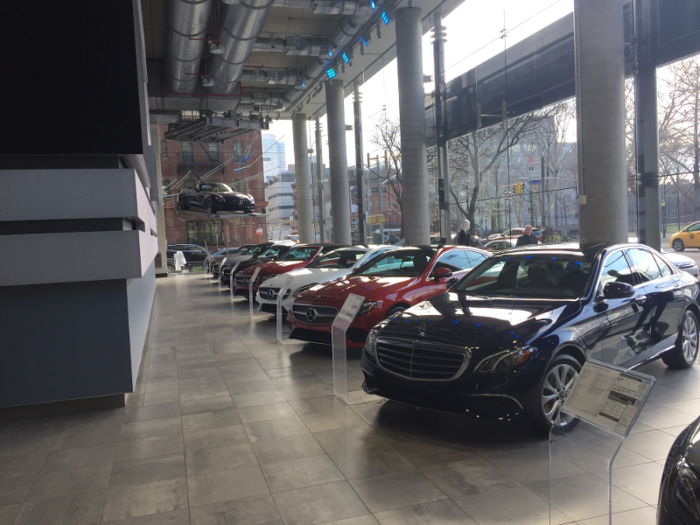
Though the brand sets some of its more high-end models, like this GT C Roadster, apart from the other cars.
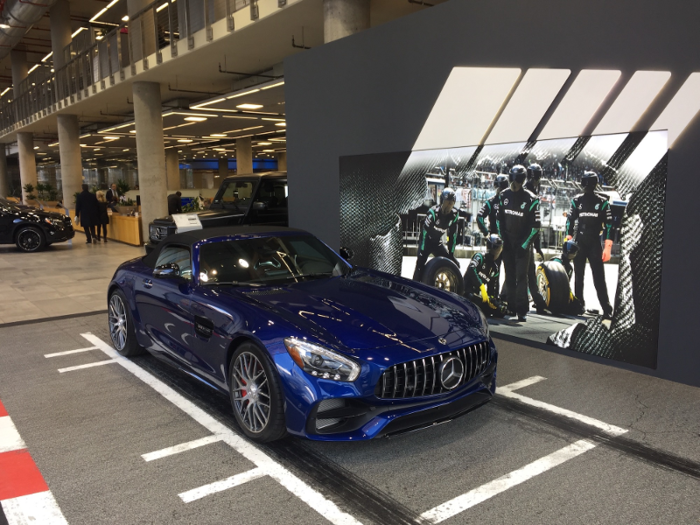
Visitors can use this installation to examine digital versions of the brand's vehicles and read slides about the brand's history.
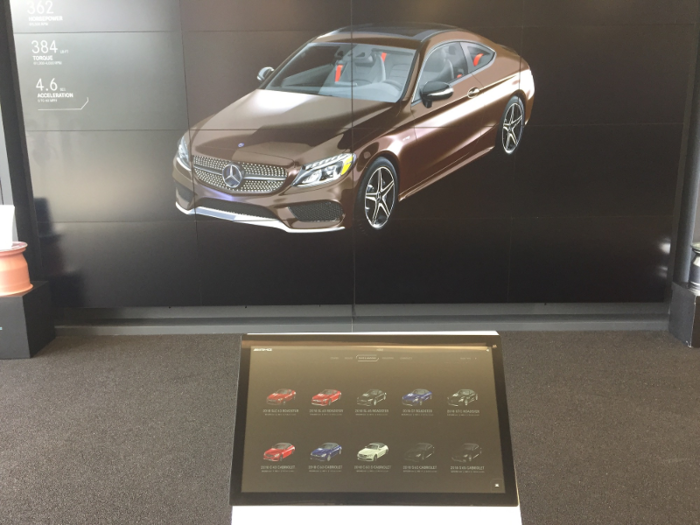
Open-air desks are arranged throughout the dealership and separated by rows of cars.
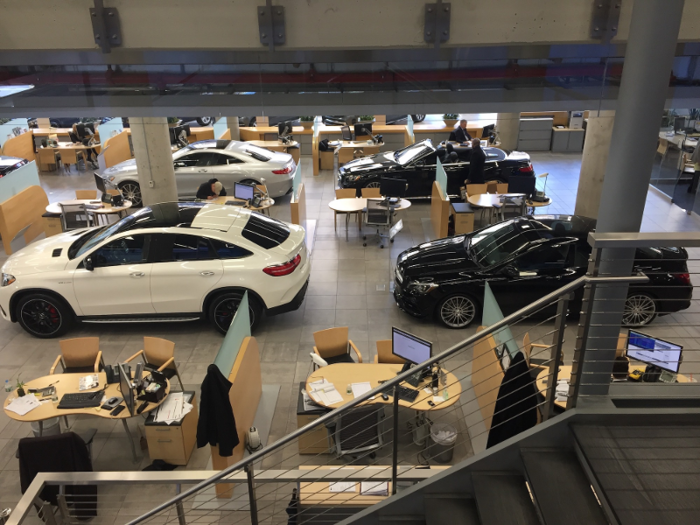
The lounge area also resembles that of a traditional dealership.

On the lower floor, a shop sells Mercedes-Benz branded merchandise.
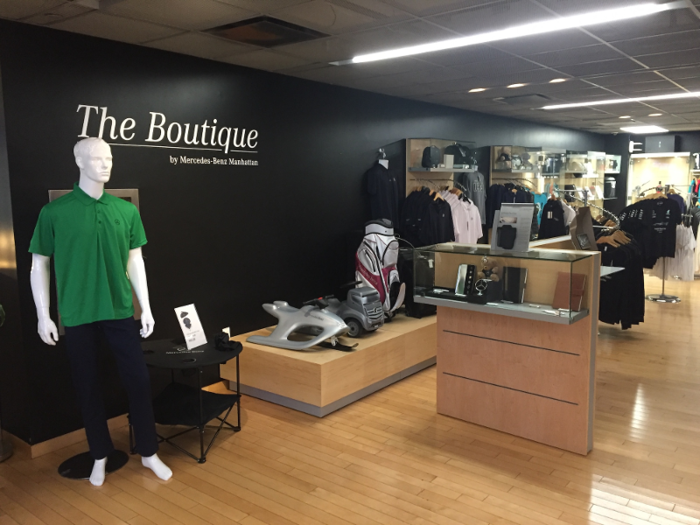
In contrast to my time at the Tesla store, I wasn't asked if I needed help for over ten minutes. Once I replied that I didn't, I wasn't approached for the rest of my time in the dealership.
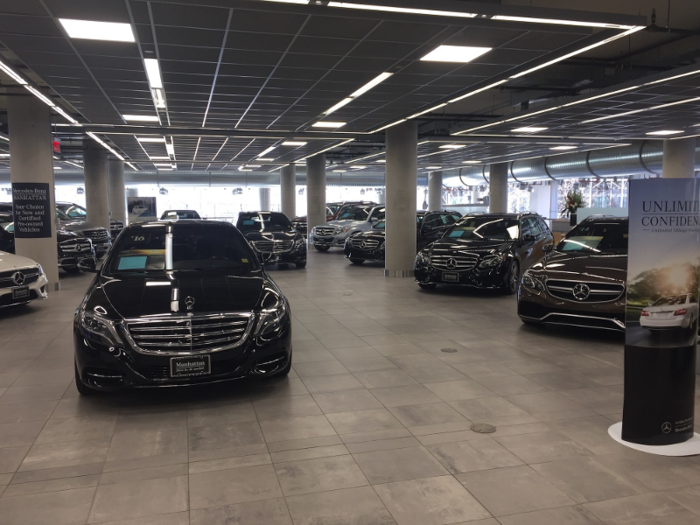
That wasn't a bad thing, since nothing about my activity indicated I wanted to buy a car or needed assistance, but it did reveal a key difference between the two brand's sales philosophies.
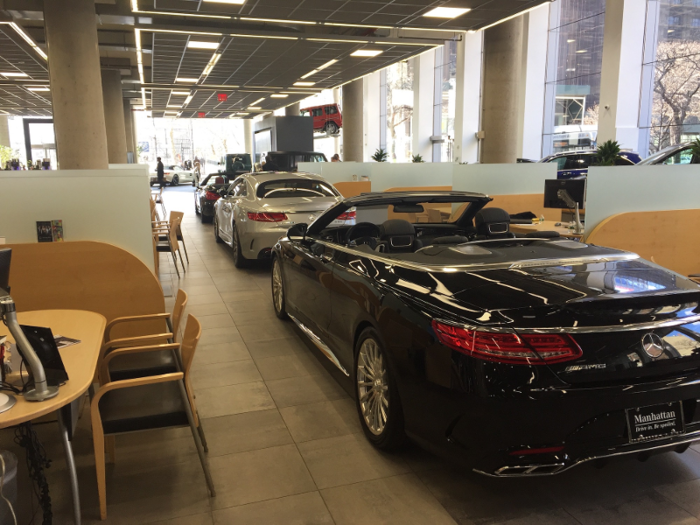
When it comes to marketing, Mercedes-Benz can rely more on traditional advertising (which Tesla doesn't use) and a reputation built over nearly a century. If you're coming to a Mercedes-Benz dealership, you're likely already familiar with the brand.

And unlike Tesla, Mercedes-Benz doesn't run an energy business on the side, so the brand has less of a need to sell its vision to people who aren't interested in buying its cars.
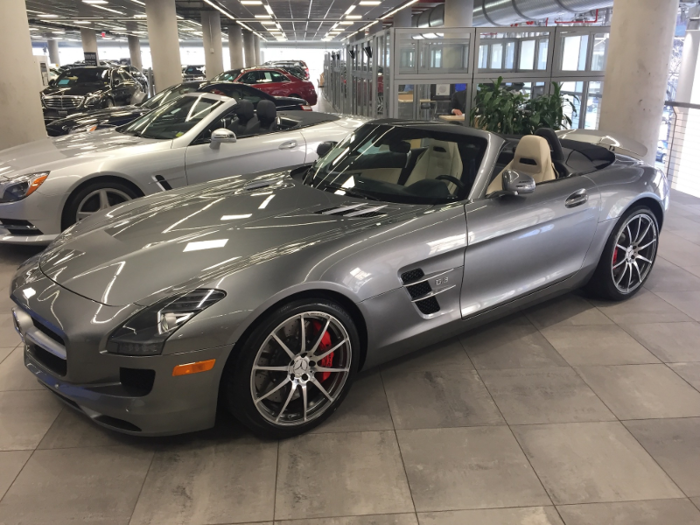
The brand's age and the auto industry's reliance on physical retail makes it less necessary for Mercedes-Benz to adopt innovative retail models. It will be interesting to see if that holds true in the coming decades as the auto industry shifts toward electric and self-driving vehicles.
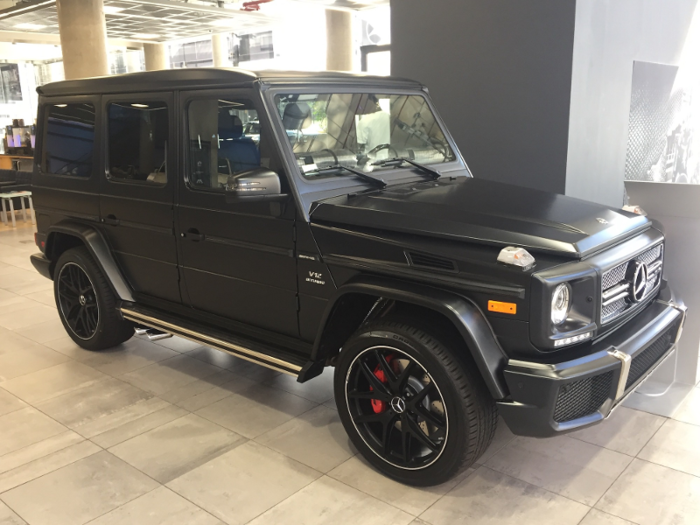
Popular Right Now
Popular Keywords
Advertisement